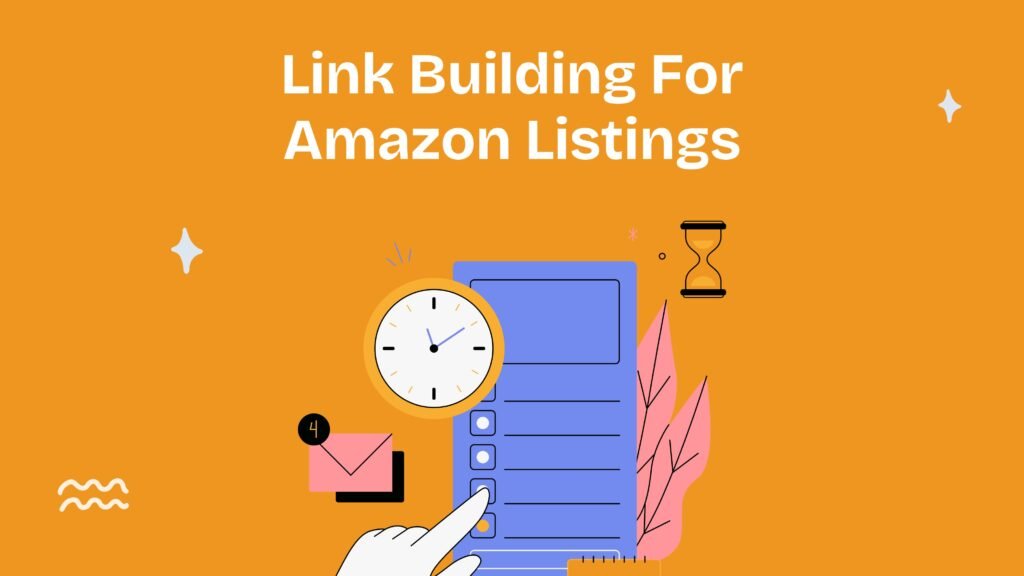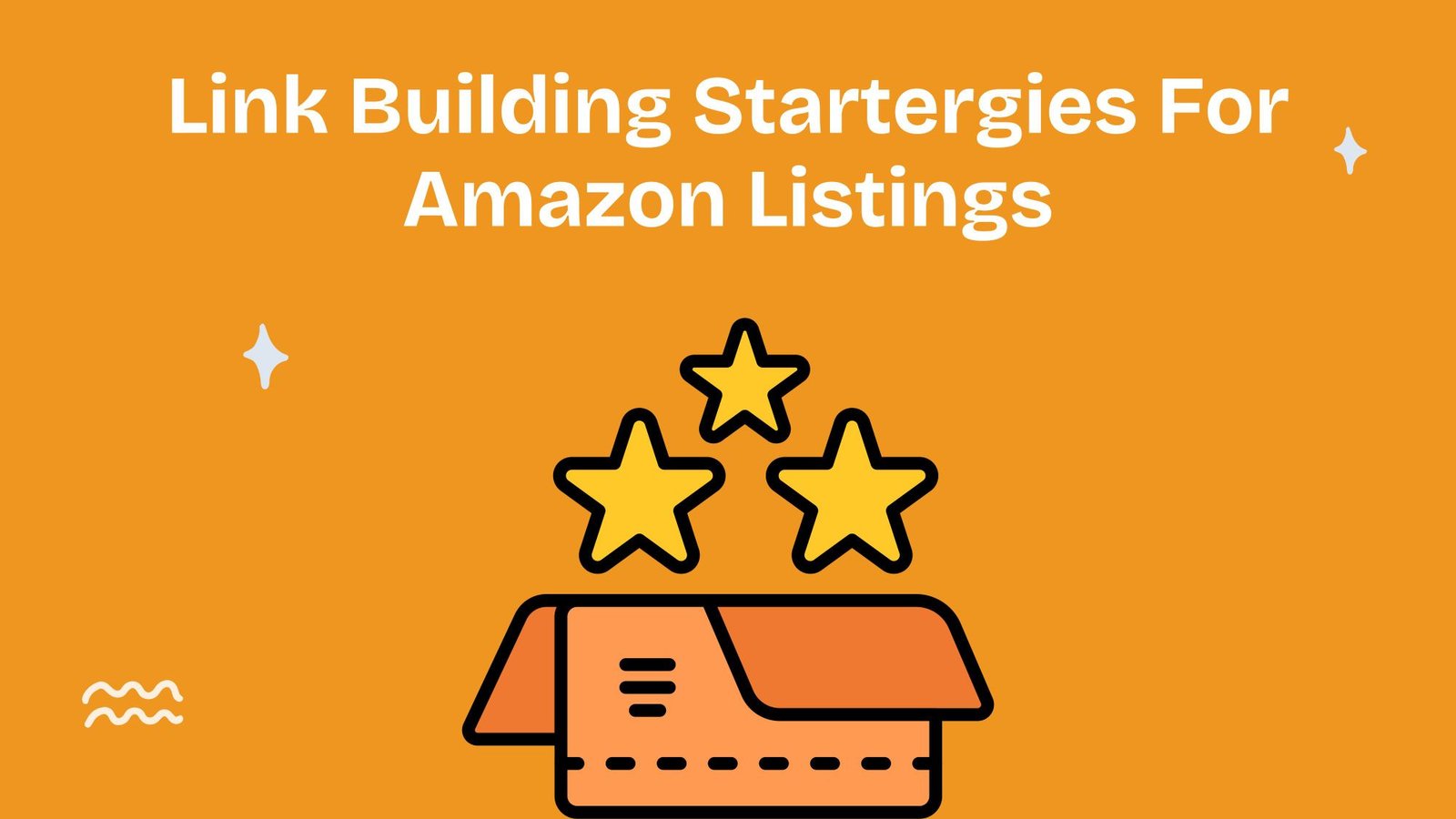
Link building is a crucial aspect of digital marketing, often associated with enhancing the visibility and authority of websites on search engines. However, its significance extends beyond traditional websites to platforms like Amazon, where competition is fierce and visibility can make or break a product’s success. In the realm of e-commerce, particularly on Amazon, link building can be a game-changer for sellers looking to boost their product listings and drive sales. This article delves into the intricacies of link building for Amazon listings, offering insights and strategies to optimize your product’s presence on the world’s largest online marketplace.
Amazon’s algorithm, much like Google’s, considers various factors to determine the ranking of product listings. While keywords, pricing, and reviews play a significant role, external traffic driven by quality backlinks can significantly enhance a product’s visibility. Link building for Amazon involves creating a network of inbound links from reputable websites, blogs, and social media platforms that direct potential buyers to your product listings. This not only increases the likelihood of higher rankings within Amazon’s search results but also boosts the credibility and trustworthiness of your products in the eyes of consumers.
Understanding the nuances of link building for Amazon requires a strategic approach. It’s not just about generating a high volume of links but ensuring that these links are relevant, authoritative, and capable of driving genuine interest and traffic. This involves identifying potential link sources, crafting compelling content that encourages sharing, and leveraging relationships with influencers and industry experts who can amplify your reach.
Moreover, the landscape of link building is continually evolving, with new trends and techniques emerging regularly. Staying updated with these changes is essential for maintaining a competitive edge. Whether you’re a seasoned Amazon seller or a newcomer looking to establish a foothold, mastering the art of link building can significantly impact your success on the platform. In the following sections, we will explore effective link-building strategies tailored for Amazon listings, providing you with the tools and knowledge to enhance your product’s online presence and drive sales growth.
Why is Link Building For Amazon Listings Important?
Enhances Product Visibility
Link building plays a crucial role in increasing the visibility of your Amazon listings. When your product pages are linked from reputable sources, they gain more exposure to potential customers. This increased visibility can lead to higher traffic and, ultimately, more sales.
Boosts Search Engine Rankings
While Amazon’s internal search algorithm primarily considers factors like sales velocity and reviews, external SEO also impacts your product’s ranking. High-quality backlinks from authoritative websites can improve your product’s search engine ranking, making it easier for customers to discover your listings through Google and other search engines.
Drives Targeted Traffic
Link building helps direct targeted traffic to your Amazon listings. When your product links are placed on relevant blogs, forums, or niche websites, they attract visitors genuinely interested in your product category. This targeted approach increases the likelihood of conversions and sales.
Builds Brand Authority and Trust
Having your Amazon listings linked from reputable sources enhances your brand’s credibility. Customers tend to trust products that are recommended or referenced by trusted websites, which can lead to increased trust and higher conversion rates.
Supports Long-Term SEO Strategy
Consistent link building contributes to a sustainable SEO strategy. Over time, a strong backlink profile can help maintain and improve your product rankings, ensuring ongoing visibility and sales growth.
How Link Building Benefits Amazon Sellers
- Increased Organic Traffic: External links can bring in visitors from search engines, reducing reliance solely on Amazon’s internal traffic.
- Competitive Edge: Well-executed link building can set your listings apart from competitors who neglect external SEO efforts.
- Enhanced Product Credibility: Links from authoritative sites act as endorsements, boosting your product’s perceived value.
- Higher Conversion Rates: Targeted traffic from relevant sources is more likely to convert into buyers.
Common Strategies for Link Building for Amazon Listings
Implementing effective link building strategies can significantly impact your Amazon sales. Some popular methods include:
- Guest Blogging: Writing articles for niche blogs and including links to your Amazon listings.
- Influencer Outreach: Collaborating with influencers to review or mention your products with backlinks.
- Content Marketing: Creating valuable content such as guides, reviews, or tutorials that naturally include links to your listings.
- Forum and Community Engagement: Participating in relevant forums and communities, sharing links where appropriate.
- Press Releases and Media Coverage: Distributing newsworthy stories about your products to gain backlinks from news outlets.
Best Practices for Effective Link Building
To maximize the benefits of link building, keep these best practices in mind:
- Focus on Quality over Quantity: Prioritize backlinks from authoritative and relevant sites rather than numerous low-quality links.
- Avoid Black-Hat Techniques: Steer clear of spammy or manipulative tactics that can harm your reputation and violate Amazon policies.
- Maintain Natural Link Profiles: Ensure your backlinks appear organic and diverse to avoid penalties.
- Monitor Your Backlink Profile: Regularly check your backlinks to identify and disavow harmful links.
- Align Links with Content: Place links within relevant, high-quality content to improve user engagement and SEO value
Effective link building is a vital component of a comprehensive Amazon listing optimization strategy. By increasing visibility, improving search rankings, and driving targeted traffic, link building can significantly enhance your product’s success on Amazon. Implementing ethical and strategic link building practices will ensure sustainable growth and long-term benefits for your Amazon business.
Top Strategies for Link Building for Amazon Listings

Effective link building can significantly boost your Amazon product rankings, increase visibility, and drive more sales. While traditional SEO tactics are essential for websites, optimizing for Amazon requires a tailored approach that aligns with its unique platform dynamics. Here are some proven strategies to enhance your Amazon listings through strategic link building.
Leverage External Content Marketing
Creating high-quality content outside of Amazon is one of the most effective ways to generate backlinks that point directly to your listing or related landing pages.
Blog Posts & Articles
Write informative blog posts about topics relevant to your product niche. Incorporate links back to your Amazon listing within the content.
YouTube Videos
Produce engaging videos demonstrating how to use or benefit from your product. Include links in video descriptions that direct viewers to your Amazon page.
Pinterest & Infographics
Design visually appealing infographics highlighting key features or benefits. Share these on platforms like Pinterest with embedded links leading users toward your product listings.
Tip: Focus on creating valuable resources rather than just promotional material—this encourages sharing and earns natural backlinks over time.
Build Relationships With Niche Influencers and Bloggers
Influencer outreach remains a powerful tactic in generating authoritative backlinks while also boosting brand awareness.
Select Relevant Influencers
Identify bloggers, YouTubers, and social media personalities who cater specifically to your target audience.
Create Genuine Collaborations
Offer free products for reviews or sponsored mentions that include direct links back to your Amazon listings.
Guest Posting Opportunities
Contribute guest articles on reputable industry sites with contextual backlinks pointing to your product.
Pro Tip: Ensure all collaborations comply with FTC guidelines when including affiliate-style references linking to your product page.
Optimize Your Product Listing’s Backlink Profile
While external backlinking drives authority, internal optimization also plays a critical role.
Use Keyword-Rich Anchor Texts
Include keyword-focused anchor text when linking from external content, but avoid over-optimization.
Include Clear Calls-to-Action
Encourage clicks with buttons or anchor text like “Buy Now” or “Check Price on Amazon” that link directly to your listing.
Monitor Referral Sources
Use tools to regularly analyze referral sources and identify which external channels drive the most traffic and conversions.
Harness User-Generated Content to Amplify Links
Encouraging your customers and followers to participate in content creation helps expand reach organically.
Run Social Media Contests
Ask fans to share how they use your product and tag your brand. Use hashtags and links that direct people back to your listings.
Leverage Customer Testimonials
Highlight real customer reviews on blogs or forums where backlinks can be included in organic discussions.
Utilize Press Releases and Media Outreach
Distributing newsworthy updates about launches, promotions, or milestones can earn valuable backlinks.
Craft Compelling Press Releases
Focus on what makes your product unique and provide media with the context they need to cover your story.
Reach Out to Publications
Target relevant online magazines, news sites, and industry blogs that might be interested in covering your product.
Measuring & Analyzing Link Building for Amazon Listings
Effective link building is not just about execution—it’s also about tracking performance to understand what’s working.
Key Metrics to Track in Link Building Campaigns
Referral Traffic : Track how many visitors arrive at your Amazon listing via backlinks.
Backlink Quality : Focus on gaining links from authoritative sources with high domain authority (DA).
Number of Backlinks : Both quality and quantity matter, but high-authority links are more impactful.
Anchor Text Relevance : Use descriptive, keyword-rich anchor text to help search engines understand the linked content.
Bounce Rate & Time on Page : Understand if visitors are staying and engaging or bouncing immediately.
The Role of Tracking Tools in Measuring Success
Google Analytics : Provides insights into referral traffic and visitor behavior.
Amazon Seller Central : Gives performance analytics specific to your product listings.
SEO Tools (e.g., Ahrefs, SEMrush) : Track backlink growth, lost links, and domain authority metrics.
Link Monitoring Tools : Alert you when backlinks appear or disappear to help maintain link health.
Analyzing Your Data Effectively
Identify Trends Over Time : Track referral traffic fluctuations based on campaigns or seasonal factors.
Assess Backlink Quality vs Quantity : Avoid focusing on numbers alone. One good backlink is better than ten spammy ones.
Measure Ranking Impact : Monitor keyword position changes on Amazon after major link-building efforts.
Evaluate Conversion Rates : More clicks mean nothing without sales—make sure your traffic converts.
Practical Tips for Measurement
• Set Clear Goals: Define KPIs before launching a campaign.
• Establish Baseline Data: Measure metrics before you start link-building.
• Review Metrics Regularly: Weekly or monthly, depending on campaign size.
• Adjust Tactics Based on Insights: Refine what’s working and drop what’s not.
Common Mistakes to Avoid While Link Building for Amazon Listings
• Avoid these pitfalls that could harm your listing rather than help it.
• Using Low-Quality or Spammy Links
• Avoid buying cheap bulk backlinks. These can trigger penalties from search engines and damage credibility.
• Focus on authoritative domains.
• Avoid irrelevant link farms or low-value directories.
Ignoring Relevance Between Linking Sites and Product Niche
• Make sure linking sites align with your product category.
• Tech blogs for electronics.
• Wellness forums for health-related items.
Overlooking Anchor Text Optimization
• Avoid vague anchor texts like “click here.”
• Use targeted phrases like “best wireless headphones.”
• Avoid keyword stuffing.
Focusing Only on Quantity Instead of Quality
• Do not fall for the myth that more links always mean better results.
• Prioritize one high-authority link over 10 weak ones.
• Build relationships with influencers and bloggers who have real reach.
Neglecting Ethical Link-Building Practices
• Avoid black-hat methods like automated link schemes or PBNs.
• Follow Google’s Webmaster Guidelines.
• Build links organically through value-driven outreach.
Frequently Asked Questions (FAQs)
What is link building for Amazon listings?
Link building for Amazon listings involves acquiring hyperlinks from external websites that point to your product pages on Amazon. These links help increase referral traffic, build authority, and indirectly improve your product’s visibility in Amazon and Google search results.
Does link building help improve my Amazon rankings?
Yes, while Amazon’s A9 algorithm doesn’t rely on backlinks the same way Google does, external links can drive more traffic and sales—which in turn improves your organic rankings on Amazon through increased engagement and conversion rates.
What kind of websites should I get backlinks from?
Focus on authoritative and relevant websites in your niche. For example, if you’re selling fitness gear, links from fitness blogs, health forums, or YouTube fitness channels carry more weight than unrelated websites.
Can I use affiliate links in my link-building efforts?
Yes, you can. However, affiliate links do not pass SEO value (since they’re often tagged as “nofollow”), but they can drive traffic and sales. Use a mix of direct Amazon links and affiliate links strategically.
How many backlinks do I need for my Amazon listing?
There is no fixed number. Instead of focusing on quantity, prioritize building a few high-quality backlinks from trusted sources. One strong backlink can have more impact than dozens of weak ones.
Should I use anchor text with keywords?
Yes, but use it sparingly. Include keywords naturally in the anchor text (e.g., “best wireless headphones”) without over-optimization. Avoid generic phrases like “click here.”
Can backlinks negatively affect my Amazon listings?
Yes, if you use spammy, irrelevant, or paid links from shady sources, it can damage your reputation or lead to devaluation by search engines. Stick to ethical, white-hat practices.
How do I track the performance of my backlinks?
Use tools like Google Analytics, Amazon Seller Central reports, and third-party SEO tools like Ahrefs or SEMrush. These help you monitor traffic, new backlinks, and conversions.
Is guest posting still effective for Amazon products?
Absolutely. Guest posting on relevant blogs or niche publications is a great way to gain authority backlinks, increase exposure, and build brand credibility.
Final Thoughts
Strategic link building for Amazon listings can substantially improve visibility, credibility, and conversions—but only when done thoughtfully. Focus on quality, relevance, and ethical practices. Measure everything and refine your approach over time.
